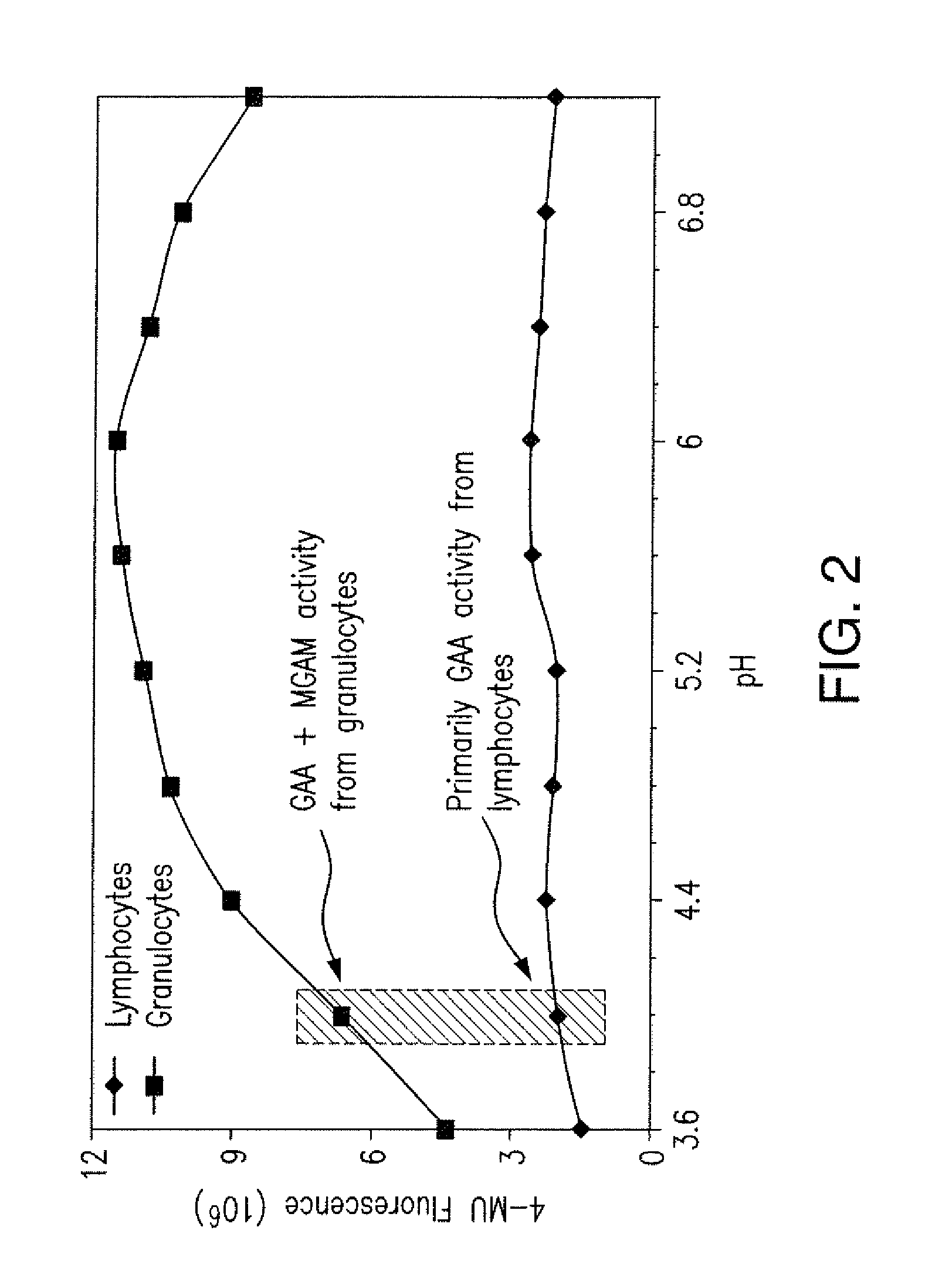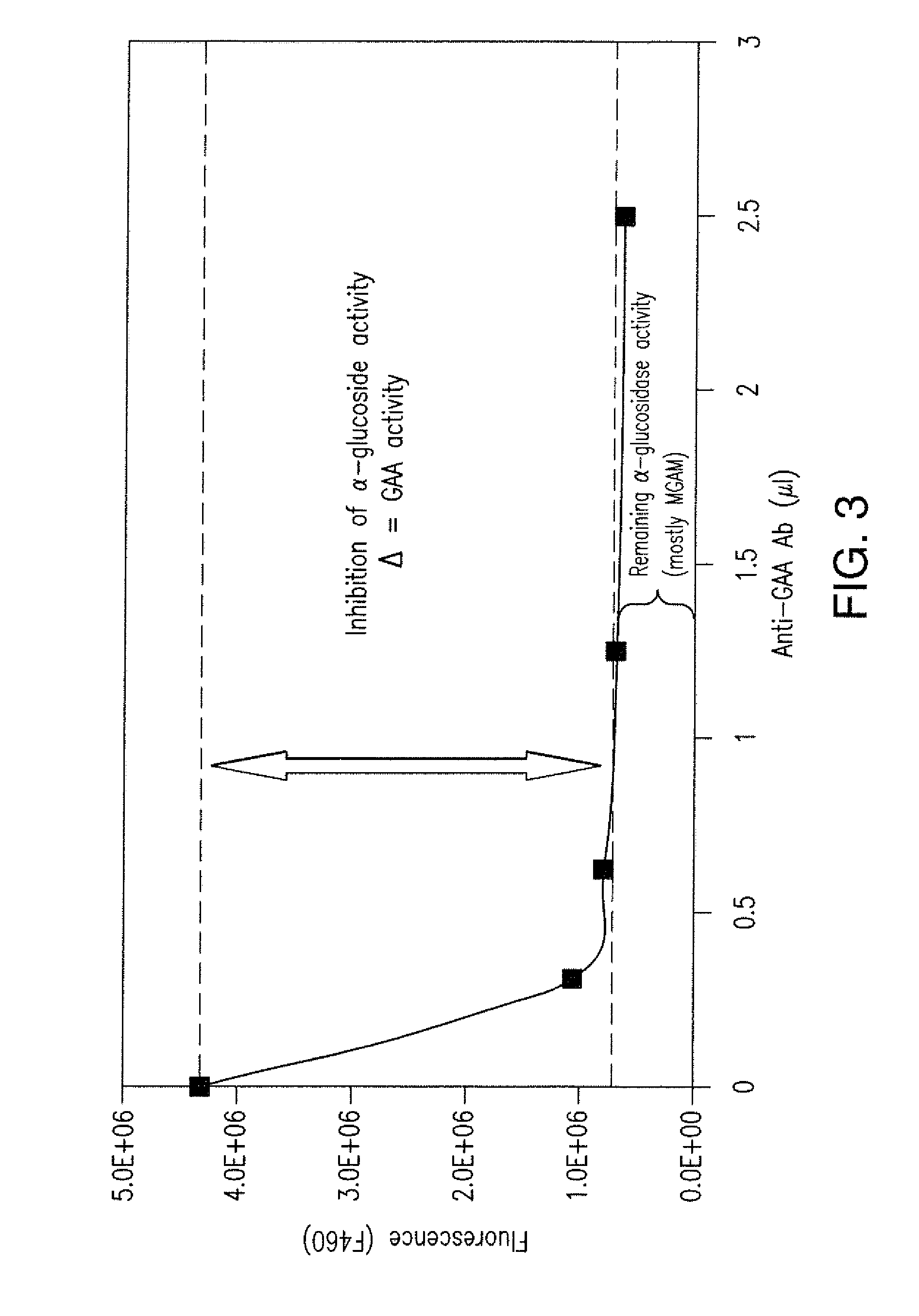Method for diagnosing pompe disease
- Summary
- Abstract
- Description
- Claims
- Application Information
AI Technical Summary
Benefits of technology
Problems solved by technology
Method used
Image
Examples
example 1
Ficoll Density Gradient Isolation Methods Reduce but do not Eliminate Contaminating Neutrophil MGAM Activity from Lymphocyte Preparations
[0082]In order to identify individuals with Pompe disease, methods to measure GAA activity in blood samples have been developed. These methods include measuring the hydrolysis of the substrate 4MU-α-Glc by GAA. Such methods identify individuals with Pompe disease by detecting a decreased level of GAA activity in samples from the individuals compared to GAA activity in samples from individuals without the disease. However, these methods are not suitable to accurately measure small differences in GAA activity, primarily due to contaminating neutrophil granulocytes which express maltase glucoamylase (MGAM). The hydrolysis of the GAA substrate 4MU-α-Glc at pH 4 by MGAM masks low levels of GAA activity (FIG. 2). Cell isolation methods using density gradients (e.g., Ficoll) (FIG. 1) enrich for GAA expressing lymphocytes, but do not completely remove gran...
example 2
Distinguishing GAA Activity from Contaminating α-Glucosidases with Anti-GAA Antibodies
[0083]α-Glucosidase activity was measured in lysates from Ficoll-isolated lymphocytes. GAA enzymatic activity was measured as a function of the enzyme's ability to hydrolyse the GAA substrate 4MU-α-Glc. Fluorescence of the hydrolyzed substrates indicates GAA enzymatic activity. Polyclonal anti-GAA antibodies specifically bind to GAA and inhibit enzyme activity. Enzymatic reactions (using 4MU-α-Glc) were performed in parallel with or without anti-GAA Ab. The amount of GAA activity is determined by the difference between these samples (i.e., Δ=GAA activity) (FIG. 3).
[0084]GAA activity was measured in lysates from Ficoll-isolated lymphocytes from 15 healthy volunteers in parallel assays. A first assay was conducted in the presence of anti-GAA antibody, while a second assay was conducted in the absence of the antibody. The difference between the two assays is the enzymatic activity due to GAA. The obse...
PUM
 Login to View More
Login to View More Abstract
Description
Claims
Application Information
 Login to View More
Login to View More - R&D
- Intellectual Property
- Life Sciences
- Materials
- Tech Scout
- Unparalleled Data Quality
- Higher Quality Content
- 60% Fewer Hallucinations
Browse by: Latest US Patents, China's latest patents, Technical Efficacy Thesaurus, Application Domain, Technology Topic, Popular Technical Reports.
© 2025 PatSnap. All rights reserved.Legal|Privacy policy|Modern Slavery Act Transparency Statement|Sitemap|About US| Contact US: help@patsnap.com



